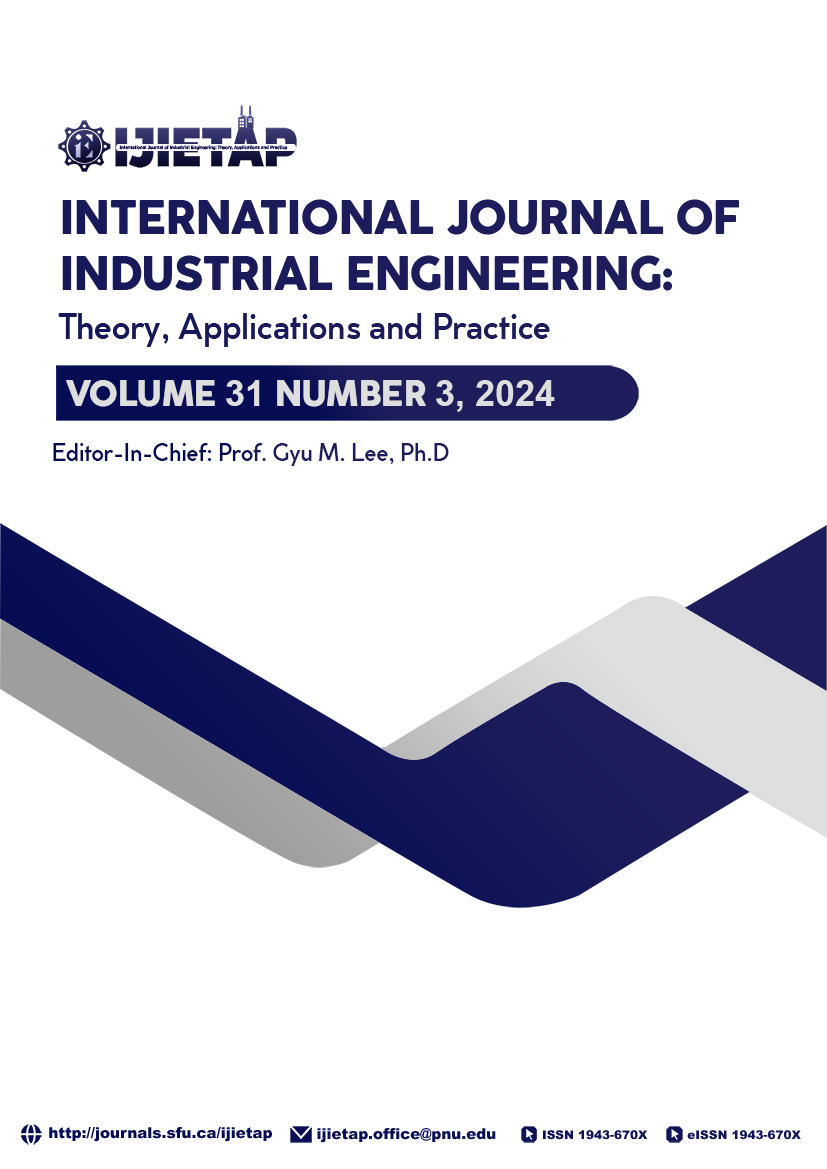Digital Twin-Oriented Collaborative Optimization of Process Planning and Scheduling in A Flexible Job Shop
DOI:
https://doi.org/10.23055/ijietap.2024.31.3.9823Abstract
Process planning and scheduling are two crucial components in flexible manufacturing systems. To address the challenge of information interaction and sharing during the process planning and scheduling stage of parts, a digital twin-oriented approach is proposed. The objective is to optimize the maximum makespan while accommodating fluctuations in the job shop site. Firstly, in the process planning stage, an enhanced genetic algorithm is employed to generate multiple near-optimal process routes. These routes are coded using a four-level coding system, enhancing the efficiency of the planning process. Then, in the production scheduling stage, a hybrid particle swarm optimization algorithm is constructed, considering the characteristics of multi-process routes and the status of shop production resources and production systems. To improve local search ability, various neighborhood structures are utilized. Finally, the proposed method is evaluated through production example simulations and compared with genetic algorithm and particle swarm optimization. The results demonstrate that this method has a quicker convergence rate, shorter execution time, and higher computation precision, which is not only remarkable but also practical for addressing the collaborative optimization of process planning and scheduling in discrete manufacturing systems.
Published
How to Cite
Issue
Section
License
The Author(s) must formally transfer each article's copyright before publication in the INTERNATIONAL JOURNAL OF INDUSTRIAL ENGINEERING. Such transfer enables the Journal to defend itself against plagiarism and other forms of copyright infringement. Your cooperation is appreciated.
You agree that the copyright of your article to be published in the INTERNATIONAL JOURNAL OF INDUSTRIAL ENGINEERING - THEORY, APPLICATIONS, AND PRACTICE is hereby transferred, throughout the World and for the full term and all extensions and renewals thereof, to INTERNATIONAL JOURNAL OF INDUSTRIAL ENGINEERING - THEORY, APPLICATIONS, AND PRACTICE.
The Author(s) reserve(s): (a) the trademark rights and patent rights, if any, and (b) the right to use all or part of the information contained in this article in future, non-commercial works of the Author's own, or, if the article is a "work-for-hire" and made within the scope of the Author's employment, the employer may use all or part of the information contained in this article for intra-company use, provided the usual acknowledgments are given regarding copyright notice and reference to the original publication.
The Author(s) warrant(s) that the article is Author's original work and has not been published before. If excerpts from copyrighted works are included, the Author will obtain written permission from the copyright owners and credit the article's sources.
The author also warrants that the article contains no libelous or unlawful statements and does not infringe on the rights of others. If the article was prepared jointly with other Author(s), the Author agrees to inform the co-Author(s) of the terms of the copyright transfer and to sign on their behalf; or in the case of a "work-for-hire," the employer or an authorized representative of the employer.
The journal does not provide the author copy of the final paper when it is published. The author(s) can make(s) a subscription to INTERNATIONAL JOURNAL OF INDUSTRIAL ENGINEERING - THEORY, APPLICATIONS, AND PRACTICE if they want to get the final paper that has already been published.
The journal is registered with the Library of Congress (ISSN # 1943-670X). All rights reserved. No part of this publication may be reproduced, stored in a retrieval system, or transmitted in any form or by any means, electronic, mechanical, photocopying, recording, or otherwise, without the prior written permission of the journal.
The author reserves patent and trademark rights and the right to use all or part of the information contained in the article in future non-commercial works.





